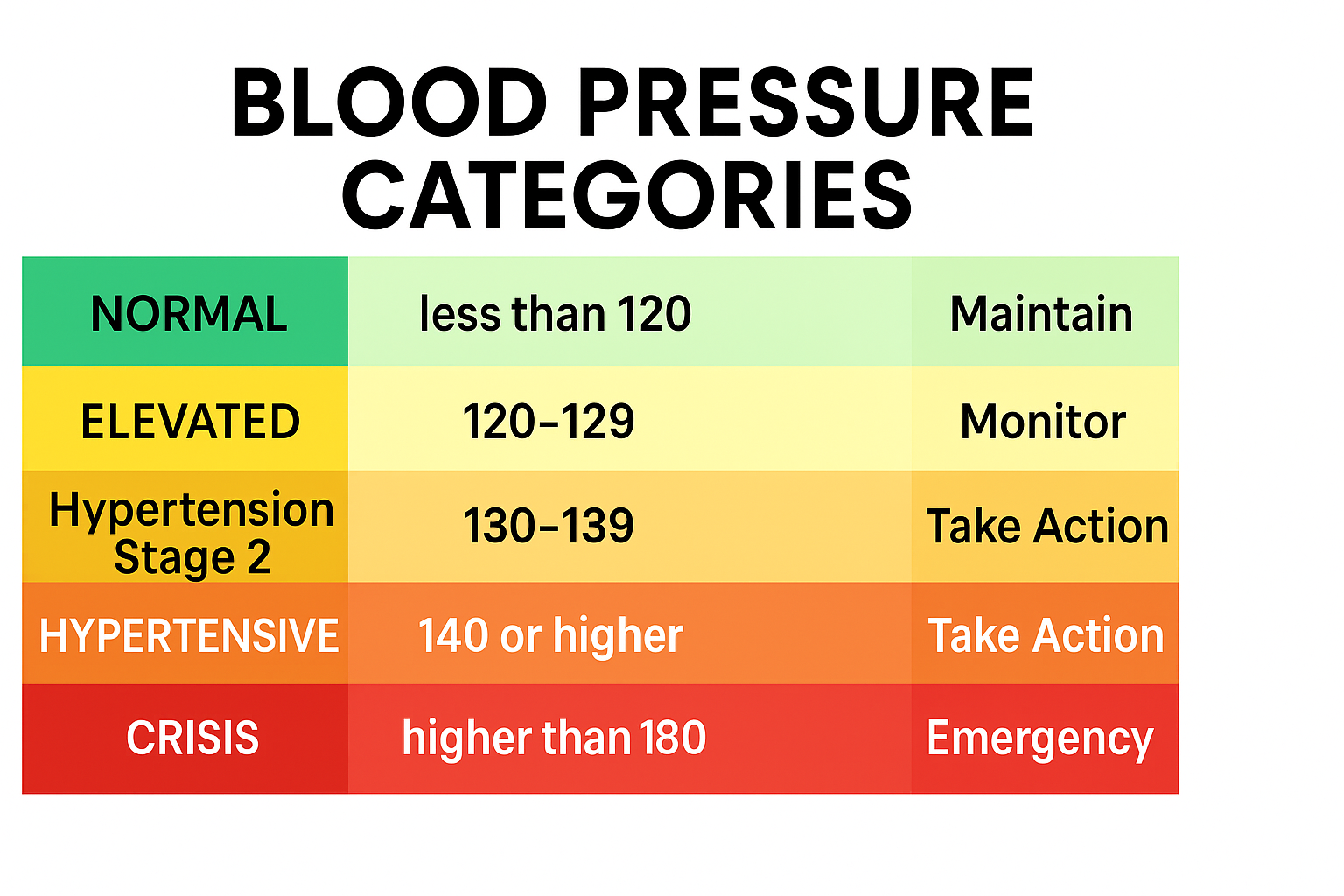Key Highlights
- High blood pressure, or hypertension, often shows no symptoms but can lead to heart attack and stroke.
- Nearly half of U.S. adults have high blood pressure—and many are unaware.
- Prevention includes lifestyle changes like exercise, healthy diet, and avoiding smoking.
High blood pressure, often called the “silent killer,” lurks unnoticed in millions of lives, posing a serious risk for heart attacks, strokes, and other life-altering health complications. Unlike many health conditions, hypertension offers no obvious symptoms, making regular blood pressure checks a critical step in safeguarding your well-being.
Drawing from expert insights provided by the American Heart Association, this article breaks down what your blood pressure numbers mean, why they matter, and how you can take control to protect your heart and live a healthier life.
Decoding Your Blood Pressure Numbers
Your blood pressure reading consists of two numbers: systolic and diastolic, measured in millimeters of mercury (mm Hg). The systolic number—the higher of the two—reflects the pressure in your arteries when your heart beats. The diastolic number shows the pressure when your heart rests between beats. Together, these readings offer a snapshot of your cardiovascular health.
According to the American Heart Association, here’s how the categories break down:
- Normal: Less than 120/80 mm Hg — Ideal and heart-healthy.
- Elevated: Systolic between 120–129 mm Hg and diastolic less than 80 mm Hg — A warning sign to modify lifestyle habits.
- Hypertension Stage 1: Systolic 130–139 mm Hg or diastolic 80–89 mm Hg — May require lifestyle changes and possible medication.
- Hypertension Stage 2: Systolic 140 mm Hg or higher or diastolic 90 mm Hg or higher — Requires medical and lifestyle intervention.
- Hypertensive Crisis: Systolic above 180 mm Hg and/or diastolic above 120 mm Hg — Medical emergency.
Only a qualified healthcare provider can diagnose or interpret your results, so regular checkups are essential.
Why Systolic Pressure Matters More with Age
While both numbers are important, the systolic pressure becomes increasingly significant with age. For people over 50, a high systolic reading is often linked to stiffened arteries and plaque buildup, increasing the risk of cardiovascular disease. Monitoring this number closely can help prevent serious complications later in life.
Taking Charge of Your Blood Pressure
The encouraging news? You can actively manage your blood pressure with informed, proactive steps. Here’s how to approach each category:
- Normal Range: Maintain healthy habits—balanced diet, regular exercise, and no tobacco use.
- Elevated: Reduce salt, manage stress, and commit to physical activity to prevent escalation.
- Hypertension Stage 1: Begin lifestyle changes immediately; medication may be advised based on other health risks.
- Hypertension Stage 2: Use prescribed medication and adopt heart-healthy habits for effective control.
- Hypertensive Crisis: Retake your reading after five minutes. If still high, seek immediate medical care, especially with symptoms like chest pain or vision changes.
The Power of Awareness and Community
Managing hypertension isn’t just a personal effort—it thrives in community. Sharing experiences, joining support networks, and staying informed through resources like the American Heart Association can make the journey easier and more effective.
Act Now for a Healthier Tomorrow
High blood pressure may be silent, but its impact is anything but quiet. From daily habits to emergency response, each action counts. Knowing your numbers—and acting on them—could save your life.
To learn more and use the AHA’s Blood Pressure Calculator, visit heart.org. Multilingual blood pressure charts and additional resources are also available.
A global media for the latest news, entertainment, music fashion, and more.















